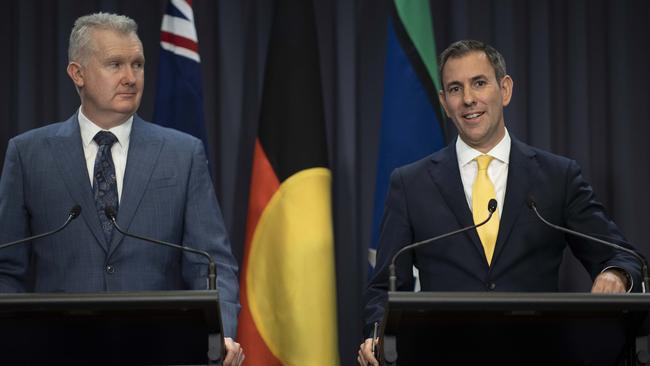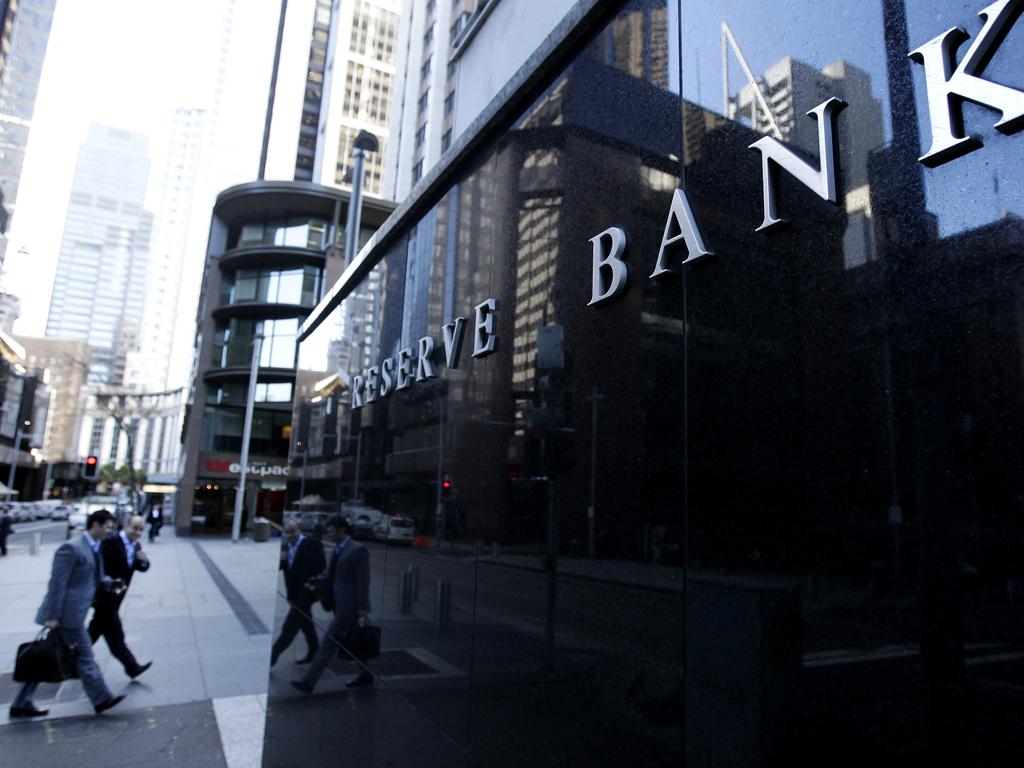
This is particularly the case when it comes to Employment and Workplace Relations Minister Tony Burke, who loudly crowed about the recent Fair Work Commission decision to grant a pay rise of 5.75 per cent to more than 2.5 million award-dependent workers. In his view, it was “the best decision for workers we’ve ever had”.
He added that he thought it was dreadful that some people were warning the decision would lead to higher interest rates: “All the different inflation pressures that are out there … that some people want to just argue somehow it is the workers’ fault and particularly those who are reliant on the award system and the minimum wage”.
The next week, the Reserve Bank increased the cash rate by 25 basis points, with the likelihood of more increases to come.
We should expect better of Jim Chalmers: he must know that wage increases without productivity rises will lock in inflation or possibly accelerate the rate. At the time of last year’s decision by the FWC, the Treasurer seemed to understand this point by claiming the decision was exceptional.
He stated: “We don’t believe that there should be an automatic, mechanical minimum wage rise on every occasion that perfectly matches the headline inflation rate. We’ve made it clear that each annual minimum wage case should take into account all of the economic circumstances.”
Sadly, this economic common sense has vanished, with Chalmers issuing a joint statement with Burke praising the FWC’s recent decision: “The government argued for a decent pay rise for these workers, and the government welcomes the decision from the independent Fair Work Commission.” There is no mention of it being an exceptional time or taking into account “all of the economic circumstances”.
One could ask: Are Chalmers’ leadership ambitions getting in the way of sensible economic thinking?
For purely rhetorical reasons, Labor has made much of a comment made by then finance minister Mathias Cormann in March 2019 that wage flexibility is “a deliberate design feature of our economic architecture”.

The irony is that this supposed political gaffe was referring to Labor’s economic architecture, to the Fair Work Act that Labor had implemented in 2012. Cormann was making the unremarkable point that the law was designed to ensure pro-cyclical wage movements in line with productivity improvements.
What is not appreciated about the Coalition’s term in office between 2013 and before the pandemic was that small annual real wage gains were being achieved in the context of low inflation. To be sure, the nominal wage increases were small, but there was little inflation. It may have appeared that wages were not moving, to use Labor’s terminology, but the real gains achieved then have been in sharp contrast with the recent decline in real wages when inflation has taken off.
The real concern here is that the key ministers of the Labor government simply dismiss the workings of labour markets and the impact of wage increases not aligned with productivity improvements. Burke indeed celebrated the lodging of a claim for a 25 per cent pay rise for childcare workers served on 62 childcare operators under the new multi-employer bargaining provisions that have come into effect.
“We had 10 years where wages were being deliberately kept low and what we’re now seeing is people using the laws that were only changed because there was a change of government and a change of policy that came with that, that will result in getting wages moving,” Burke declared.
What he utterly fails to understand is that were these childcare operators to agree to the claim, the fees they charge parents would need to rise substantially, potentially undoing the government’s initiatives to make childcare cheaper. The likeliest outcome would be a plea by the childcare operators for even more taxpayer support to fund the higher wages, a move that itself would be inflationary. That’s the thing about economics: it doesn’t provide free lunches.
This brings us back to the government’s productivity agenda – or, more accurately, the lack of a productivity agenda. Chalmers unconvincingly nominates three areas the government intends to focus on: the energy transition, skills and education and technology. He has dismissed any workplace relations changes that may assist productivity improvements, declaring the recent suggestions by the Productivity Commission as “scorched earth”, notwithstanding their modest, incremental nature.
(The changes proposed by the Productivity Commission included award flexibility subject to national employment standards being met; reviewing recent changes to bargaining arrangements, including multi-employer bargaining; limiting the restrictive content of enterprise agreements; implementing independent dispute resolution for platform workers; and facilitating insurance for platform workers. That Chalmers would dismiss these ideas out of hand points to his closed mind on the topic. At this stage, he has not even sought a briefing from the chairman of the Productivity Commission on the most recent report.)
When it comes to the energy transition, Chalmers fails to understand that the energy sector has been a constant drag on productivity for at least a decade and a half. The substantial expenditure on renewable energy has led neither to lower prices nor more productivity. The fact is, because of the intermittent nature of renewable energy, a great deal of redundancy is required in the system to make good any shortfalls. With inadequate storage, which is itself expensive, and slow progress with new transmission lines, the outlook for productivity in the electricity sector is dismal.
When it comes to spending on skills and education, this is a perennial favourite of most governments. But the evidence here is weak. We have had many years of higher spending on school education, higher education and training, but any impact on productivity growth is difficult to detect. Much of the extra spending has been ineffective – think here declining school student performance – and it’s not clear we have the mix right. Arguably we have far too many school-leavers attending university, undertaking courses that do little to lift workplace performance, and too few doing trade training and vocational education.
Chalmers is pinning his hopes on new technology to boost productivity growth, pointing in particular to the potential for artificial intelligence to move the dial. At this stage this is wishful thinking, with scant evidence that the advent of the internet and the smartphone has been associated with higher productivity.
The bottom line is that the government’s productivity cupboard is close to empty and the few contents all involve more unaffordable government spending that is potentially inflationary. By encouraging wages to grow far in excess of productivity, the end result will be persistent high inflation, higher interest rates and rising unemployment. It won’t be the fault of the Reserve Bank but, rather, the government’s mistaken view that wages don’t matter and the failure to promote higher productivity.








Slogans may help win elections but they are useless at guiding government policymaking. “Get wages moving”, for example, sounds appealing enough but its simplicity ignores the necessary preconditions for sustainable real wage growth, something the federal Labor government seems incapable of understanding.